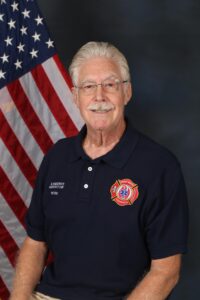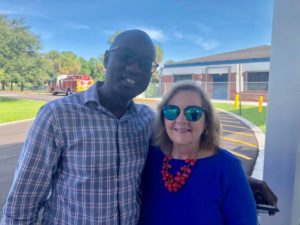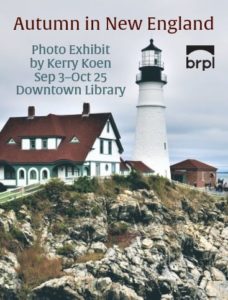
The guy on the left is a CPA, the dog on the right is a Certified Party Animal.
My son earned his CPA recently.
It’s a proud moment. He has worked so hard.
When Ben went down this road, I didn’t really have an appreciation of how hard it is to pursue a degree and a career in public accounting.
But I quickly learned that accounting is an immensely taxing discipline—pun very much intended.
Earning an accounting degree from the University of Florida and later a master’s at FAU required a huge commitment. Luckily, Ben’s experience at Atlantic High School’s IB program prepared him for the copious amount of studying it takes to make it through.
It was a far cry from my experience at SUNY Oswego in the 80s where studying took a back seat to going to the tavern with my buddies.
When given the choice between the library and pitchers of Genesee Cream Ale, well let’s just say the Dewey Decimal System didn’t stand a chance. I had a group of entertaining friends who went by names like “Tank” and “Large Guy.” There was a kid from Utica who had a blank stare and never said a word and there was a guy who looked like Bob Denver from Gilligan’s Island. I think the quiet guy became an accountant.
Large Guy never went to class, and I found that…well… I didn’t really give it a thought.
My day of classes would be ending, and I would be coming back to my dorm room when I would see him in a robe paddling down the hallway on the way to the showers. He was just waking up when my day of classes were ending.
One year, when my friend Scott and I had a late final before Christmas break, we wandered back to the dorm after our test. It was dark and cold and windy, because it was Oswego and it was always dark, cold and windy.
We no longer lived in the dorm, but we went back to our old floor in Hart Hall for something. We saw Large Guy sitting in the TV lounge, alone in the dark, watching a small black and white television.
He had nowhere to go. It was a pathetic site. We took pity on him and invited him to our off-campus house because we knew the dorms would be closing and we weren’t sure where he would end up.
It was an early act of mercy, not common when you’re a young man focused on things like 10-cent wings and Monday Night Football.
We felt good about our benevolence for about two minutes which is when Large Guy got on our nerves on the long walk from campus to our house on a dark, cold, and windy Oswego night.
I graduated with a degree in political science, which was a decent background for my first career in journalism. But I have to say that my son’s focus on a profession was smarter than my haphazard approach to my formal education.
I’ve learned a lot after leaving school. I’ve had to learn on the fly, reinvent a few times and fake it till I made it more times than I can count.
It’s been exhausting.
I have zero complaints and things have certainly worked out for me. I’m a grateful guy but my son is taking the smarter path.
He’s building the scaffolding first. He’s made the investment and he’s paid his dues. Now he can go anywhere knowing he has that scaffolding beneath him. I wonder what that’s like.
Accountants get a bad rap in our society. They are often the butt of jokes about being boring. But I’ve noticed that many CEO’s have a background in accounting.
They may not have stayed in the profession, but they parlayed their expertise to lead companies and they will often credit their success to the knowledge they gained studying accounting.
Lately, there has been a lot of anxiety over Artificial Intelligence and its potential to possibly replace humans in a variety of fields; accounting being one of those endeavors.
That may be true, but I have to think that the human touch will never go out of style.
At least I hope it won’t.
I’m here to make a case for people over machines. For face-to-face interactions over screens.
Give me a town hall meeting over a social media page and a doctor’s visit over telemedicine. Oh, I get the convenience of computers, but we must never give our entire selves over to bits and bytes.
Recently, I listened to an audiobook on Spotify for the first time. I chose Arnold Schwarzenegger’s new book “Be Useful” because I like Arnold and because it was short. I also love his accent. I’ve been talking to the dogs in my Arnold “Terminator” voice for the past week. “I’ll be back,” I tell them when I leave for the office in the morning.
The book was pretty good—Arnold said a whole lot that I agreed with, and he said some things that made me want to debate him. That’s a good thing. He challenged my thinking.
Arnold repeated over and over that he was not a “self-made” man. He generously credits a slew of mentors who helped him achieve success in bodybuilding, Hollywood, politics, and philanthropy.
I love that he shared his gratitude for those who lent a helping hand to him along the way. Too many famous people subscribe to the “I’m a genius” mindset and that’s why I made it. But we all know that success is a team sport.
And so, Arnold urges us to find mentors and to mentor others. In the age of selfies, we need to look beyond ourselves and connect with others. And that is not only good advice for a happy life, but also a guarantee that we won’t just look to ChatGPT to write all of life’s essays.
So, I agreed with Arnold on that major theme of the book. But I did think he was a little hard on formal education, particularly college. Yes, going to a university can be expensive and student loan debt is a real burden. But there is something to be said about spending a few years learning to live on your own. It’s valuable to spend some time letting your mind wander by taking courses in history, philosophy and in my case creative writing (the only course I ever failed). And there’s certainly value in prepping for a profession such as accounting. Higher education is a place for both exploring and digging deep.
I did one of those…I explored. And I’ve been exploring ever since. My son did both—he had fun and he went deep and developed a skill. I think he made the right decision. We are so proud of him.

Mike Wigderson
Note:
We lost retired Delray Fire Rescue Assistant Michael Wigderson last week. It’s a big loss.
Chief Wigderson was a wonderful man, a believer in Delray Beach and a major contributor to our community.
He was a big reason why we have the very best Fire Department in the state, and he worked extremely well for a long time with Chief Kerry Koen.
When I learned of Mike’s passing, I reached out to Kerry who shared a few stories of Mike’s can-do spirit, his positivity, and his unwavering commitment to Delray.
Chief Wigderson was very involved in St. Vincent’s Church and quietly helped so many people in our community when they needed it most.
We’ve lost a wonderful man.
This has been a very difficult year for our Fire Department with the loss of five (that I can count) key contributors.
When all is said and done, life is a “people business.” If we’re lucky we attract good people who devote their lives to a cause, a community or an endeavor that enriches others.
Mike was a good man. And Delray was lucky to have him. So lucky.
We wish Sue and his family peace during this difficult time. May his memory be a blessing.








